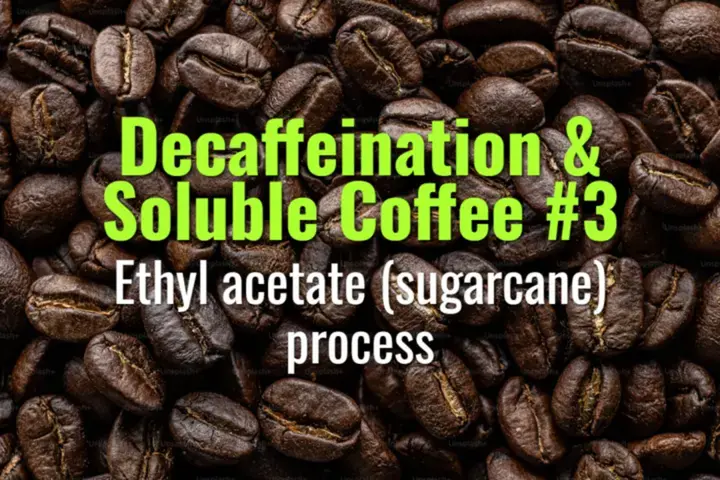Ethyl acetate (sugarcane) process
How the ethyl acetate (EA) process—often called the sugarcane method—decaffeinates coffee using a naturally derived solvent while maintaining desirable flavor qualities.
- Coffee Basics Nerds
- 2 min read
Article 3 of 12 in Decaffeination & Soluble Coffee/

Overview
- Ethyl acetate (EA) is a solvent naturally found in fruits and sugarcane.
- Often marketed as “natural decaf” when derived from sugarcane fermentation.
- Selectively removes caffeine while preserving much of the coffee’s inherent character.
Step-by-Step Process
- Steaming: Green beans steamed to open pores and soften structure.
- Solvent Application: Beans washed in a solution of water and ethyl acetate.
- Caffeine Extraction: EA bonds preferentially with caffeine molecules, drawing them out of beans.
- Rinsing: Residual solvent removed by further steaming/water washing.
- Drying & Stabilization: Beans dried back to stable moisture content and packaged.
Advantages
- Naturally Associated Compound: Marketed positively since EA occurs in many foods.
- Flavor Preservation: Maintains good sweetness and body.
- Cost-Effective: Less expensive than Swiss Water or CO₂.
Considerations
- Residue Concerns: Proper processing ensures only trace, safe levels of EA remain.
- Perception: Some consumers may distrust the word “solvent,” even if naturally derived.
- Flavor Impact: Slight fruity or ester-like notes may be introduced.
Market Relevance
- Popular in Latin America, especially Colombia, where sugarcane-derived EA is locally available.
- Increasingly favored in specialty coffee as a balance of natural image and cost efficiency.
Summary
The ethyl acetate (sugarcane) process decaffeinates coffee by selectively binding caffeine with a naturally occurring solvent. Seen as more natural than chemical alternatives, it preserves flavor well and is cost-effective, making it a popular choice in both origin-based and specialty markets.